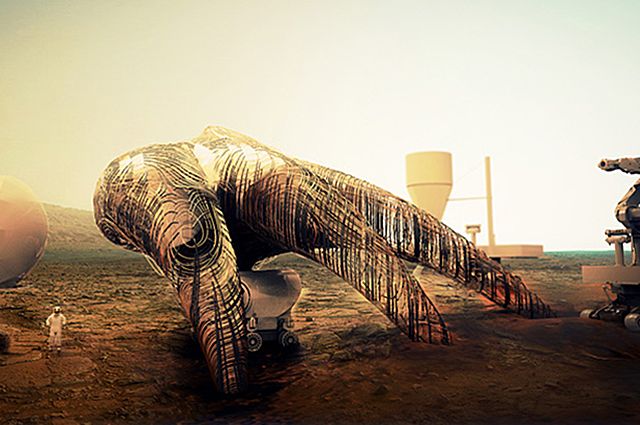Architect and artist Guvenc Özel, a lecturer in the UCLA Department of Architecture and Urban Design, was awarded fourth prize in NASA’s 3-D Printed Habitat Challenge. The competition called for architectural concepts for a four-astronaut dwelling on Mars that could be 3-D printed through the use of resources indigenous to the Red Planet. NASA received more than 165 entries in the competition, which is ultimately aimed at contributing towards the development of new technologies for additive manufacturing using "local indigenous materials" in space and on Earth.

Özel, director of the IDEAS technology lab for cross-disciplinary research at UCLA Arts and Architecture, led a competition design team that included researchers from the UCLA Department of Engineering and Material Science. The premise of the team’s entry lies in Özel’s current research at UCLA, which focuses on the application of robotics and sensors into architecture as well as collaboration with UCLA Engineering in exploring the use of composite materials in building-scale 3-D printing. In their NASA competition entry, the team proposed that — instead of 3-D printing concrete-like shells from local sand — high-performance composite shells be 3-D printed using a combination of locally harvested composite fibers soaked in fast-curing polymer resins. The proposal is a 3-D printing version of how high-performance boats, planes, satellites and spaceships are built.
A native of Izmir, Turkey, Özel studied architecture, sculpture, and philosophy at Bennington College. He holds a master’s degree in architecture from Yale University, where he graduated with multiple awards. Prior to establishing his own practice, he worked in the architecture offices of Rafael Vinoly, Jürgen Mayer H. and Frank Gehry, among others. His projects and experimental installations are exhibited in museums and galleries in the U.S. and Europe.
Özel formerly taught at Yale University, Woodbury University and the University of Applied Arts in Vienna, Studio Greg Lynn. Stories about his work have been published by CNN, the Boston Globe, Architectural Digest, Gizmodo and other media outlets. His current research on emerging technologies is focused on creating interactive environments that challenge traditional fabrication techniques and spatial assemblies.





